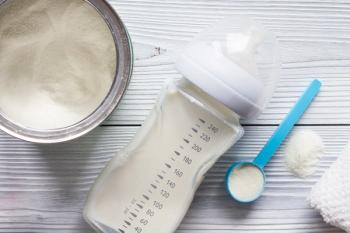
WIC can benefit older siblings too
Even though they may be too old to participate in Special Supplemental Nutrition Program for Women, Infants and Children (WIC), a new study shows that the program can help older kids eat better, too.
A nutritional assistance program aimed at improving diets of pregnant mothers, infants, and young children, may have benefits for older children in the household, too—even after they age out of the program, according to a new report.
The
Special Supplemental Nutrition Program for Women, Infants and Children (WIC) is a federal program that offers supplemental foods, education on nutrition and breastfeeding, breastfeeding support, access to health care and social services, and pregnancy and postpartum support to women and their children up to age 5 years. Eligibility for this program is based on nutritional risk and income level. Gross income has to be at or below 185% of the federal poverty level and be deemed by a health professional to be at nutritional risk to participate in WIC. Families and individuals who already participate in the Supplemental Nutrition Assistance Program (SNAP), Medicaid, or Temporary Assistance for Needy Families (TANF) are automatically eligible for WIC enrollment.2
Nearly
The new study focused on examining the dietary behaviors of children who were no longer eligible for the WIC program due to age, but lived in households with other children who were enrolled in WIC. Data were collected from 2 independent household surveys collected in 2010 and 2014 as part of the New Jersey Child Health Study.
More than 600 children who were too old to participate in WIC but who lived in households with incomes below 200% of the federal poverty level were included in the study. Nearly 400 of those children lived in homes that participated in the WIC program because of other children in the household.
The research team asked questions about specific foods, including daily fruit and vegetable intake, consumption of 100% juice or sugar-sweetened beverage, and how often sweet and salty snacks were eaten.
Overall, the study team didn’t find a big difference in the diets of children between the ages of 5 and 18 years, regardless of whether anyone else in their household was enrolled in the WIC program. There were some healthy patterns observed for children who were too old for WIC but lived in WIC households. Children in the 12- to 18-year-old age range who were ineligible for WIC due to age but lived in WIC households consumed more vegetables that their peers who lived in non-WIC households. Additionally, girls in WIC households who were ineligible for the program consumed 100% fruit juices more often than those in non-WIC households. The report also found that age ineligible children in Hispanic WIC households consumed less sugar-sweetened beverages that children in the same demographic from non-WIC households.
The study concluded that as children age out of WIC eligibility, they may still benefit from the program through younger siblings or household members. Researchers suggest that future revisions to WIC programming should consider the implications and benefits of extending the program to other children in eligible households, according to the report.
References
1. Steeves S, Acciai F, Tasevska N, DeWeese R, Yedidia M, Ohri-Vachaspati P. The special supplemental nutrition program for women, infants, and children spillover effect: do siblings reap the benefits?. J Acad Nutr Diet. 2020;120(8):1288-1294. doi:10.1016/j.jand.2020.02.013
2. Benefits.gov. Special supplemental nutrition program for women, infants and children (WIC). Accessed September 21, 2020.
Newsletter
Access practical, evidence-based guidance to support better care for our youngest patients. Join our email list for the latest clinical updates.








